Focusing on the Mundane
Tony Shepherd uses his Tamron 35-150mm F/2-2.8 zoom to elevate ordinary objects to art.
Share the article:
More Photo Tips | Video Gallery | Photo Gallery | Enewsletter sign-up
By Jenn Gidman
Images by Tony Shepherd
In 2020, Nashville photographer Tony Shepherd launched an Instagram account dedicated to street photography—some of his pictures in color, some in black and white. Soon, however, as Tony started gravitating more toward photographing the ordinary, even mundane aspects of the city around him, he found himself drawn to the black-and-white side of the craft.
“It became therapeutic for me to head out for a photo walk, clear my head, and notice the objects around us that we usually take for granted,” says Tony. “Sometimes we can think of photography as being inaccessible. I love the idea of saying, ‘Hey, it's actually super-accessible. You can get out there and create art that's awesome with very ordinary subjects.’ I want people to look at my photos and then say to themselves, ‘I’ll never look at a leaf on the ground or a fire hydrant the same again.’ I feel like I’m never going to run out of material.”
For this type of work, black and white speaks to Tony. “I appreciate the contrasts, the tones, the dynamics, the movement you notice that may not stand out as much in color,” he says. “Every once in a while on my Instagram account, I will throw a color photo in there, just to mix things up, but in general, when I’m shooting wider, I’m looking for textures, water—I shoot in the rain all the time—leading lines, and anything that has character, like rusted or metallic objects. When I’m going for a tighter crop, I’m on the lookout for straight lines with contrasting foregrounds and backgrounds, so I can emphasize that separation.”
When Tony first started delving into this type of photography, he found himself mostly shooting at 50mm. “That focal length is where I cut my teeth and developed my style, where I learned how to isolate my subject and focus on what I wanted in that frame,” he says. “I eventually started experimenting with different focal lengths, and when I began using longer lenses, I realized I appreciated the extra reach. It enabled me to hyperfocus on subjects that were further away.”
Enter the Tamron 35-150mm F/2-2.8 Di III VXD zoom lens, which Tony discovered would allow him to continue taking pictures in his 50mm sweet spot on his Sony mirrorless camera, but with more focal-length options. “This lens is phenomenal, opening up new horizons in terms of capturing detail,” he says. “My images are all so sharp. And shooting at that F/2-2.8 maximum aperture gives me a level of separation that’s fantastic, even at the 150mm end.”
Read on to see how Tony captured some recent images with the versatile Tamron 35-150mm.

35-150 (60mm), F/2.5, 1/60 sec., ISO 160
Click image to view larger
I was on the lookout for detail-oriented scenes to shoot while walking through Nashville, when it hit me how many things you look through rather than looking at. I happened to be peering through this chain-link fence when that happened, and after I let my eyes adjust to this new perspective, I realized the fence itself would be a worthy subject. I loved the combination of the lines and of the crimping on each of those loops. I shot this from all different angles, but ultimately, capturing it straight on worked for me.
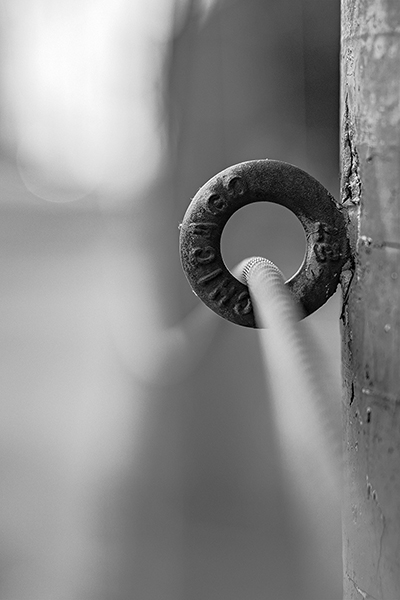
35-150 (98mm), F/2.8, 1/250 sec., ISO 50
Click image to view larger
This is one of my favorite pictures, which I took at the end of a two-hour photo walk through Nashville. There are thousands of these metal loops downtown, in all the public parking spots. They’re just an unremarkable part of the city landscape, but as the walk came to a close, I decided to set my lens at 98mm, look through the loop in the parking lot, and throw out that background. It’s not a photo I’d ever have anticipated to turn out so well, but it ended up taking off on Instagram. I think it had nearly 13,000 likes.
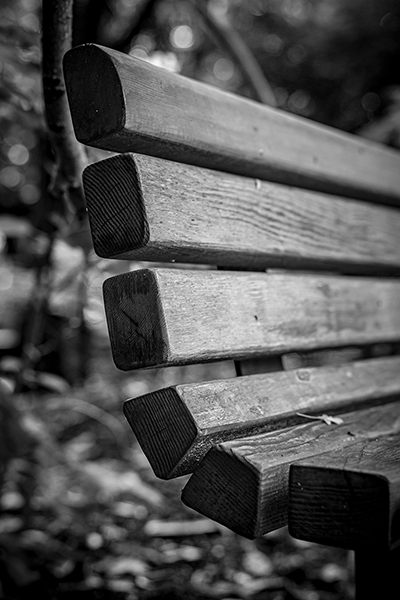
35-150 (62mm), F/3.2, 1/80 sec., ISO 160
Click image to view larger
We were on a road trip with our six kids, and when one of them says they have to use the bathroom, we need to stop. I never waste a chance to look for photo opportunities during these detours, including at this rest stop somewhere between Virginia and Tennessee. I noticed this bench because of its curvature, and also because of the texture of the finished wood grain on the side—the way that the lines were going one way on the side and then the grain was going another way. I opted to capture just the edge of the bench instead of the entire bench, so the reader would have to guess at what’s left. Thanks to the 35-150, I was able to create a deep separation between my foreground and background, even though the background had a lot of foliage.
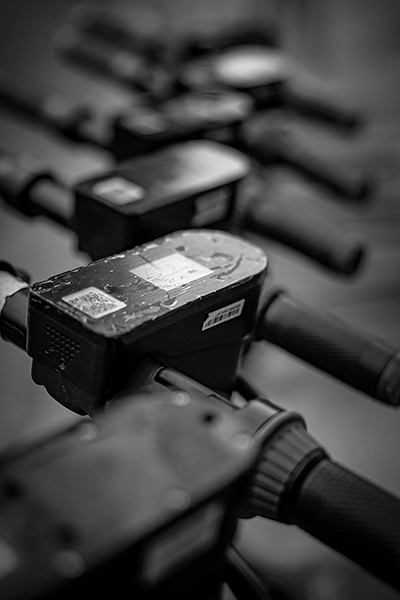
35-150 (60mm), F/2.5, 1/1600 sec., ISO 200
Click image to view larger
I was walking downtown when I noticed this line of e-scooters. Usually I’ll see one or two on the ground after people hop off and leave them lying there, but it was early morning and the lineup of bikes was still nice and neat. The repeating pattern caught my eye. I got down on the ground so I could selectively focus on just one of the bikes. The 35-150 is terrific at clearly isolating just a portion of what you’re photographing, allowing the rest of the photo to linger as something that’s more of a suggestion.

35-150 (45mm), F/10, 1/640 sec., ISO 1600
Click image to view larger
I’d swung by the dollar store and picked up this ball of twine. I had it in my pocket when I went for a stroll later that day in a new wilderness area in Tennessee, and when I came up to a footbridge, I pulled the twine out and placed it on the bridge. Bystanders were staring at me as I played around with several different placements of the twine; they couldn’t figure out what I was doing. What finally caught my attention was lining up the ball of twine with the leading lines of the bridge. It’s one of those shots that you take and say, “Hey, that’s really cool!” It was fun creating this environment, with a random item I’d purchased and then placed during a random walk.
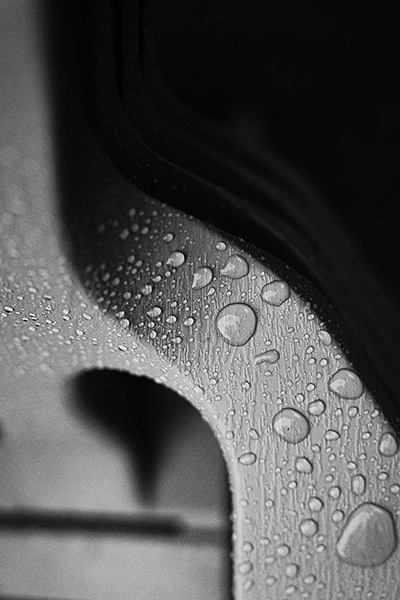
35-150 (59mm), F/3.2, 1/1600 sec., ISO 6400
Click image to view larger
I was hanging around my house when it started raining one day. I ran outside after the rain had stopped and took photos of dozens of things in my yard that had gotten wet. This photo is of water droplets on the corner of a plastic patio chair. What’s captivating to me about a picture like this is how water behaves when it’s on different surfaces, which become the secondary subject of the photograph. The water is the identifiable element; whatever it’s sitting on is a bonus element.
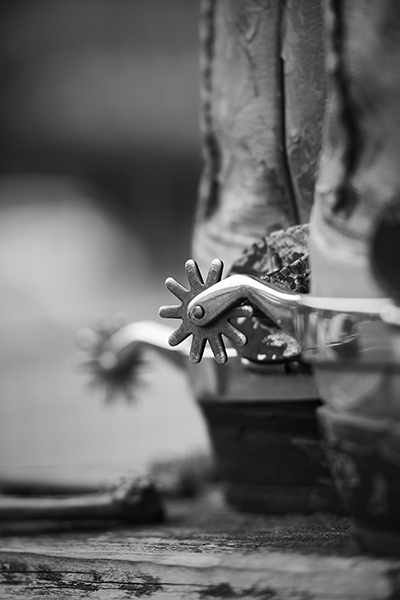
35-150 (113mm), F/2.8, 1/1000 sec., ISO 125
Click image to view larger
This was taken on Broadway, one of the most frequented thoroughfares in downtown Nashville. I noticed these boot spurs in front of a store, placed on a pedestal. I’ve never been that close to a pair. What drew me in, and what I thought about even as I was editing the photo, was that people looking at my photo would recognize these were boot spurs, but it might take a little more processing in their brains to make that connection. And I thought that would only add to their appreciation of the photo. What I appreciated about taking this photo was my ability to shoot with this kind of focus, thanks to the Tamron 35-150.
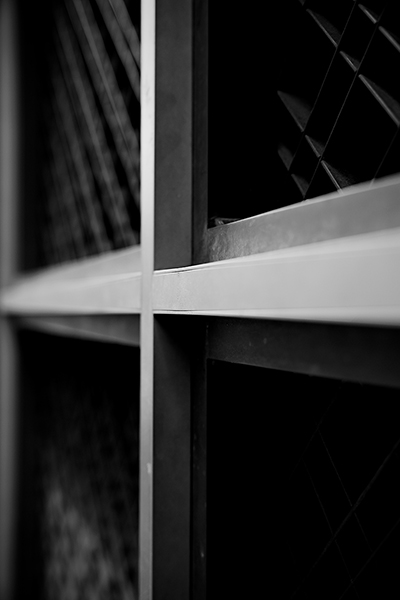
35-150 (43mm), F/3.2, 1/320 sec., ISO 125
Click image to view larger
This window pane is another local special, located at the base of the iconic AT&T Building—aka the Batman Building—in downtown Nashville. Anytime you see a photo of the Nashville skyline, this is the most identifiable structure. I loved the warm texture here, and the surface’s imperfections, as well as the horizontal, vertical, and diagonal lines that interact with each other. It engages different parts of your mind: Your desire to see perfectly straight elements is satisfied, but so is your desire to see something human and imperfect, like the dust that’s visible.
To see more of Tony Shepherd’s work, check out his website and Instagram.
More Photo Tips | Watch Videos | Learn More About Tamron Lenses | Photo Gallery
